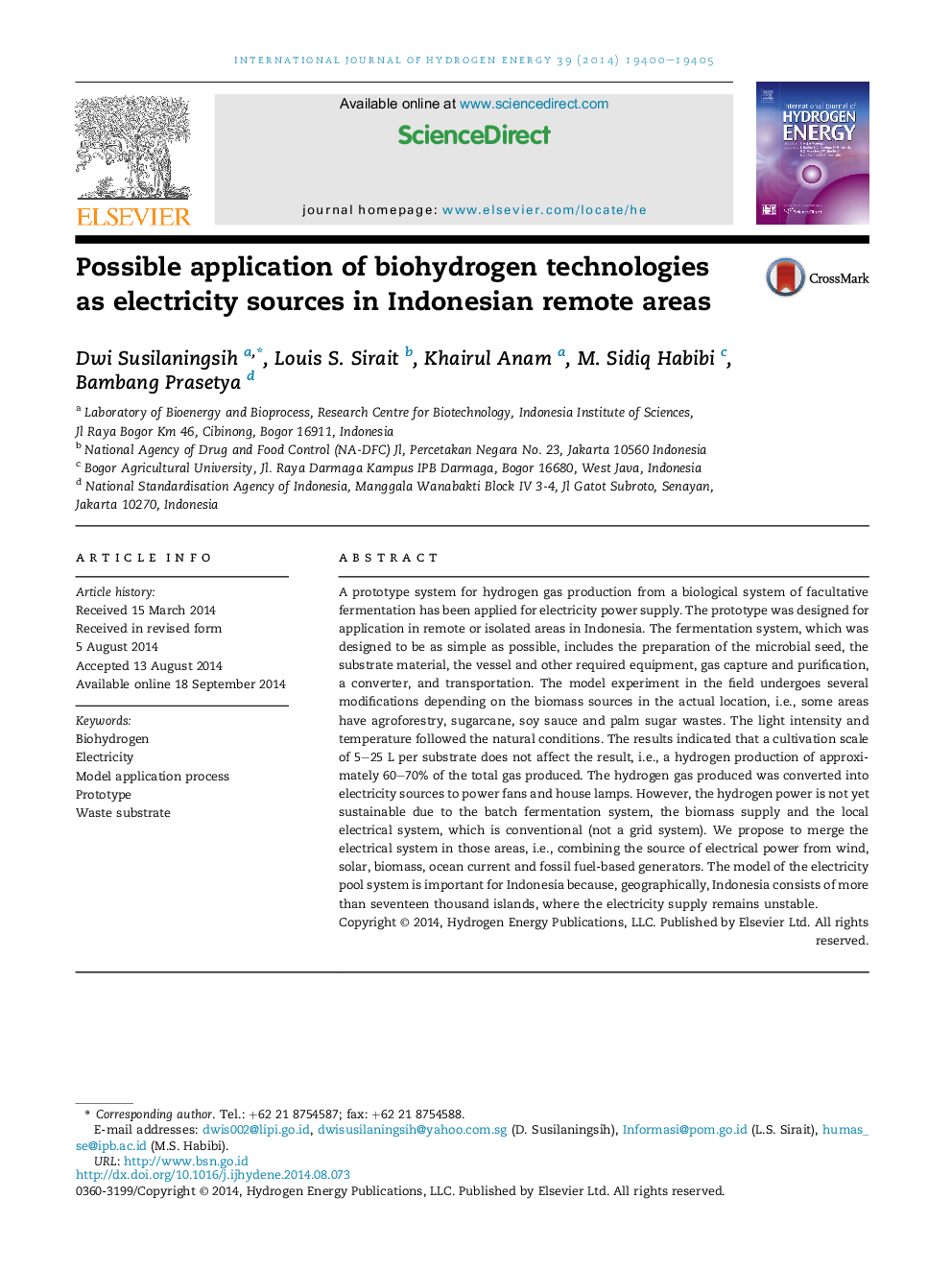| Article ID | Journal | Published Year | Pages | File Type |
|---|---|---|---|---|
| 7717956 | International Journal of Hydrogen Energy | 2014 | 6 Pages |
Abstract
A prototype system for hydrogen gas production from a biological system of facultative fermentation has been applied for electricity power supply. The prototype was designed for application in remote or isolated areas in Indonesia. The fermentation system, which was designed to be as simple as possible, includes the preparation of the microbial seed, the substrate material, the vessel and other required equipment, gas capture and purification, a converter, and transportation. The model experiment in the field undergoes several modifications depending on the biomass sources in the actual location, i.e., some areas have agroforestry, sugarcane, soy sauce and palm sugar wastes. The light intensity and temperature followed the natural conditions. The results indicated that a cultivation scale of 5-25Â L per substrate does not affect the result, i.e., a hydrogen production of approximately 60-70% of the total gas produced. The hydrogen gas produced was converted into electricity sources to power fans and house lamps. However, the hydrogen power is not yet sustainable due to the batch fermentation system, the biomass supply and the local electrical system, which is conventional (not a grid system). We propose to merge the electrical system in those areas, i.e., combining the source of electrical power from wind, solar, biomass, ocean current and fossil fuel-based generators. The model of the electricity pool system is important for Indonesia because, geographically, Indonesia consists of more than seventeen thousand islands, where the electricity supply remains unstable.
Keywords
Related Topics
Physical Sciences and Engineering
Chemistry
Electrochemistry
Authors
Dwi Susilaningsih, Louis S. Sirait, Khairul Anam, M. Sidiq Habibi, Bambang Prasetya,
